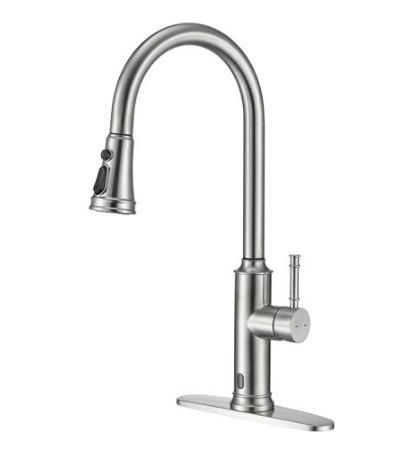product

I believe that everyone must encounter such a problem. The kitchen faucet is leaking at the rotating part, which not only causes the waste of water, but also makes the kitchen full of water, which makes everyone very upset. Therefore, when encountering such a problem, we must solve it in time. First, we must check what causes the faucet to leak, and then we can prescribe the right medicine. Today, the editor will introduce to you the solution to the leaking water at the rotating part of the kitchen faucet.
There are three common types of leaks in kitchen faucets:
1. The reason for the leakage of the water outlet: it is due to the wear of the shaft gasket in the faucet. Solution: Use pliers to loosen and remove the gland bolt, take out the shaft gasket with a clip, and replace it with a new shaft gasket.
2. The reason for the leakage of the gap at the lower part of the faucet: it is caused by the wear of the triangular gasket in the gland. Solution: You can loosen the screw to remove the bolt head, then loosen and remove the gland, then take out the triangular seal on the inner side of the gland and replace it with a new one.
3. Water leakage at the joint of the pipe: generally the cover nut is loose, solution: At this time, you can re-tighten the cover nut or replace it with a new U-shaped gasket.

Water leakage at the rotating part of the faucet is mainly caused by the sealing ring. The first thing to do is to make sure that the packing nut of the faucet is tight, but be careful not to scratch the nut with pliers or wrenches. Here are the tools you need to replace your faucet seal: adjustable wrench, replacement faucet seal, petroleum jelly.
If you find that the cause of the leak is not a loose nut, then you need to replace the seal. A faucet seal can be a tight sheet of one or more rubber O-rings, or something like a string or soft wire wrapped around the valve core under a packing nut.
When replacing the faucet seal, follow these steps:
Step 1: Turn off the water supply and remove the faucet handle.
Step 2: Unscrew the packing nut and remove both the nut and the old seal ring from the valve core.
Step 3: Install the new seal. If you are using wire seal material, wrap it around the valve core a few times. If it is a sealing material such as soft wire, wrap it around the valve core only once. Before you reassemble the faucet, apply a thin coat of petroleum jelly to the threads of the valve plug and the threads of the packing nut.
How to use the faucet correctly?
Some people like to screw the faucet tightly every time they run out of water, thinking that this will prevent water leakage. In fact, the correct use of the faucet should be as light as possible to turn off the faucet, do not vigorously turn the faucet knob repeatedly, and should not turn the faucet too tightly. In addition, the faucet should try not to bump with hard objects. For the use of the bathtub faucet, the metal hose of the shower head should be kept in a natural stretched state, and do not coil it on the faucet when not in use. When in use or not in use, be careful not to form a dead angle at the joint between the hose and the valve body, so as not to break or damage hose.
(Part of the material on this website comes from the Internet. If the information displayed on this website infringes your copyright or other legitimate rights and interests, please notify us in time, and this website will be deleted in time.)